Termites are social insects that live in colonies containing caste systems. Typical termite colonies have three distinct castes: reproductives, workers and soldiers.
The reproductives, including the queen and king, are responsible for mating and populating the colony. A queen is the largest and most important termite found in the colony, producing up to 1,000 eggs per day. The workers are the largest group in most termite colonies, repairing the nest, grooming and caring for nest mates, and foraging for food. Soldiers, equipped with huge armored heads and sharp, enlarged mandibles, defend the colony from attack.
Meet the “caste” of the Tiny Termite House and see how members of the colony function together, from the king and queen to workers and soldiers.
Termites date back more than 120 million years to the time of the dinosaurs and can be found in every U.S. state, except for Alaska. Depending on the species, termite colonies can consist of up to two million members, all of whom may be out of sight either tunneling underground or inside a household’s wooden structure. To date, more than 3,000 different species have been discovered worldwide, although there are five in particular that typically threaten U.S. households. While the characteristics and habits of these species vary, each poses problems for homeowners and requires proper attention.
Termites are a destructive pest that cannot be eradicated with do-it-yourself measures. In fact, termites lead to more than $5 billion in property damage each year in the United States, a cost typically not covered by homeowner’s insurance. In order to proactively prevent these devastating pests, schedule annual professional termite inspections for your home. If you suspect a termite infestation on your property, contact a licensed pest control professional to determine the extent of the problem and develop an appropriate treatment plan.
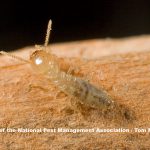
Subterranean
The subterranean termite is known to cause the most damage out of any species. These termites build distinctive tunnels, often referred to as “mud tubes,” to reach food sources and protect themselves from open air. They eat wood 24 hours a day, seven days a week, using their saw-toothed jaws to bite off small fragments of wood, one piece at a time. If left unchecked, this species can critically damage a building structure, sometimes causing a total collapse. Subterranean termites threaten property across the country, as they’re found in nearly every state in the U.S.
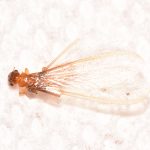
Formosan
While subterranean termites can cause the most damage overall, the Formosan species is the most aggressive, able to quickly reproduce and wreak havoc. They live in massive underground colonies with an average of 350,000 workers, invading structures by using mud tubes constructed up from the soil to wood. In a single day, Formosan termite queens can produce more than 1,000 eggs, rapidly growing a colony. A mature Formosan colony can eat about 31 grams of wood per day, which equates to a full foot of 2X4 wood in 25 days. In addition to structures, they’ve been known to infest trees, utility poles and even boats. Aside from wood, they can chew through telephone coverings and electric cable insulation, causing costly damage and power outages. This species is mostly found in the south in states like California, Alabama, Florida and Louisiana.
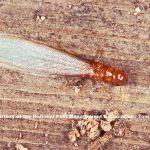
Drywood
Drywood termites typically inhabit undecayed wood, not needing contact with soil to live like subterranean termites. Therefore, they can make a home in wood furniture or framing once inside. Although less aggressive than other species, they can be transported to new locations via an infested piece of furniture or a picture frame, capable of causing expensive repairs wherever they end up. Drywood termites are typically found along the southern coast, from South Carolina to the west coast of California.
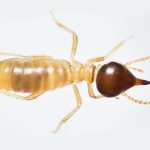
Conehead
Conehead termites get their name from the cone-shaped heads of their soldiers, who make up an unusually large portion of the colony compared to other species. Unlike most termite species, conehead termites travel above ground like ants, rather than utilizing underground tunnels. As a result, they’re able to move and spread with speed and ease. Once inside, however, they can build tunnels through wood flooring and walls, usually going unnoticed for months. Conehead termites, only found in certain southern parts of Florida, can impact a building’s structural integrity over long periods of time and have also been known to damage plants.
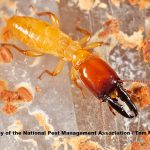
Dampwood
As their name would suggest, dampwood termites typically infest wood with a high moisture content such as logs or dead trees. They’re also attracted to water-damaged household areas, such as spaces affected by roof leaks or cracked drainpipes. Rather than constructing mud tubes like other species, dampwood termites hide inside wooden support beams and cover their entry holes with their own feces. This species is common along the Pacific coast, as well as various areas in southern Florida and the southwest.
